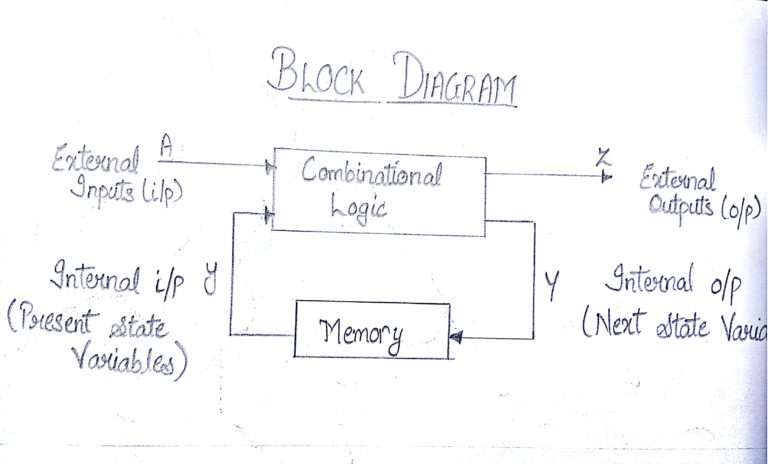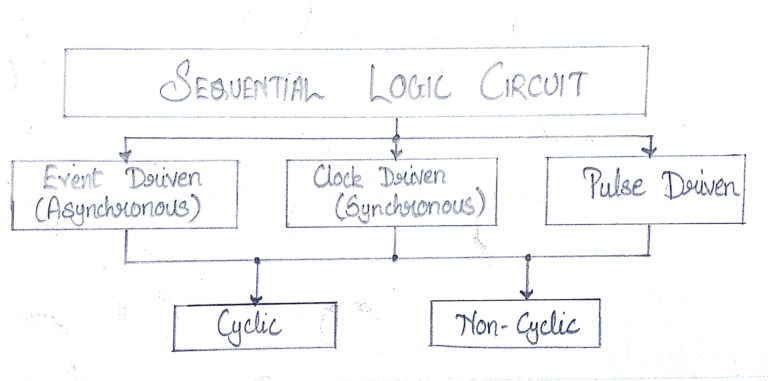Sequential Circuits Basics
Combinational logic refers to circuits whose output is a function of the present value of the inputs only.
As soon as inputs are changed, the information about the previous inputs is lost, that is, combinational logic circuits have no memory
Sequential logic circuits are those whose outputs are also dependent upon past inputs, and hence outputs. In other words the output of a sequential circuit may depend upon its previous outputs and so in effect has some form of “memory”
The mathematical model of a sequential circuit is usually referred to as a sequential machine
The general block diagram of a sequential switching circuit is shown below:

Sequential circuits are basically combinational circuits with the additional properties of storage (to remember past inputs) and feedback.
Note that the output Z is a function of inputs A and internal states y.
A Sequential logic circuits is a form of binary circuit; its design employs one or more inputs and one or more outputs, whose states are related to some definite rules that depends on previous states. Both the inputs and outputs can reach either of the two states: logic 0 (low) or logic 1 (high). In these circuits their output depends, not only on the combination of the logic states at its inputs, but moreover on the logic states that existed previously. In other words their output depends on a SEQUENCE of the events occurring at the circuit inputs. Examples of such circuits include clocks, flip-flops, bi-stables, counters, memories, and registers. The actions of the circuits depend on the range of basic sub-circuits.
What is a Sequential Logic Circuit ?
Dissimilar Combinational Logic circuits can change state depending on the real signals that are applied to their inputs, at the same time,Sequential Logic Circuits include some form of inherent “Memory” build into them as they are capable of taking into account their previous input state as well as the individuals really present, a sort of “before” and “after” effect is involved with the sequential logic circuits.A very simple sequential circuit with no inputs can be created using inverter to form a feedback loop.
Types of Sequential Logic Circuits
There are three types of sequential circuits:
Event Driven
Clock Driven
Pulse Driven

Event Driven : – Asynchronous circuits that can change the state immediately when enabled. Asynchronous (fundamental mode) sequential circuit: The behavior is dependent on arrangement of input signal that changes continuously over time, and the output can be a change at any time (clock less).
Clock Driven : Synchronous circuits that are synchronized to a specific clock signal. Synchronous (latch mode) sequential circuit: The behavior can be defined from the knowledge of circuits that achieve synchronization by using a timing signal called the clock.
Pulse Driven : This is a mixture of the two that responds to the triggering pulses.